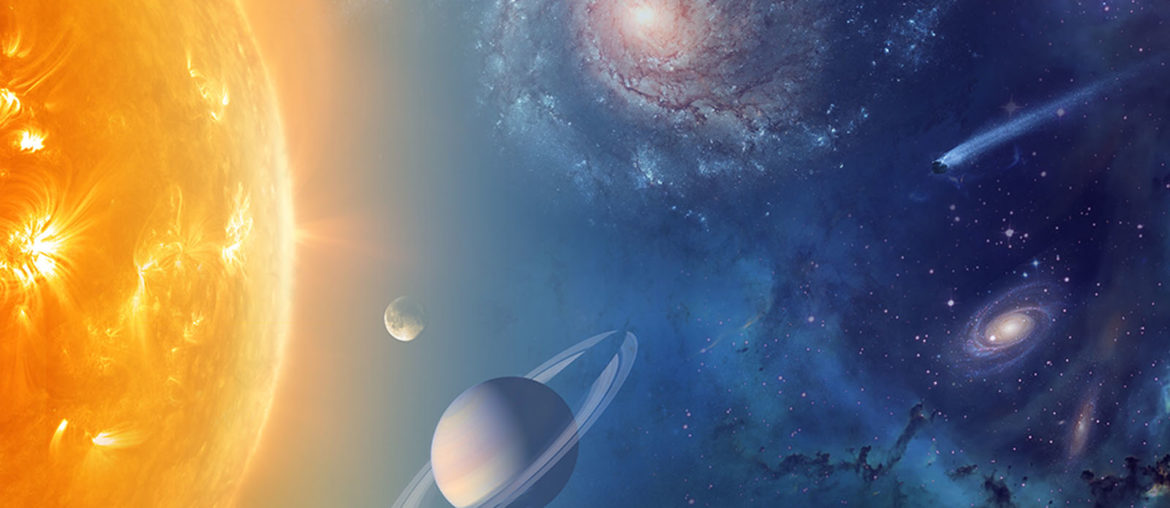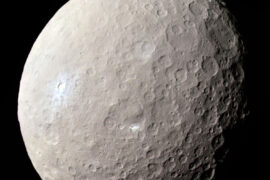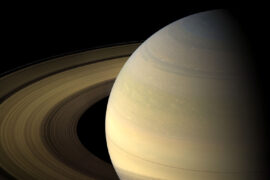One of the great things about astronomy is that there is still so much out there for us to discover. There are so many unanswered questions and mysteries about the universe. There’s always a puzzle to solve and that’s part of the beauty.
Even in our own neighboorhood, the Solar System, there are many questions we still haven’t been able to answer. In this article, we will explore some of the coolest mysteries about it that scientists are still working on.
1. Why does Venus spin backwards?
All the planets in the Solar System rotate in the same direction except one: Venus. If you could look at all the planets from a point at the top of the North Pole, you would see all of them rotating counter-clockwise. But not Venus. Venus is spinning clockwise.
Astronomers have two theories to explain why that happens. One of them is Venus could have suffered a huge impact with another object. That collision would have been so powerful it changed the direction of Venus rotational movement. The second theory is Venus is so close to the Sun and its atmosphere is so dense, the gravitational pull from the Sun created tides that flipped the planet’s axis 180º.
2. How many unknown dwarf planets are out there?
Our telescopes have been getting better really fast in the last few decades. With all these advancements, we started to find a lot of objects in the Solar System we didn’t know about. This lead to the creation of the Dwarf Planet category to label all these objects that didn’t really meet the criteria to be called a planet but were pretty close.
The International Astronomical Union has officially recognized 5 dwarf planets so far, including Pluto, but there are at least 30 other objects that have been proposed by multiple astronomers and that will be studied further in the coming years to see if they meet the criteria. Most of these dwarf planets would be located in the area known as the Kuiper belt, beyond the orbit of Neptune.
Some astronomers believe there might be up to 200 dwarf planets out there waiting to be found.
3. Why is the Sun’s atmosphere hotter than its surface?
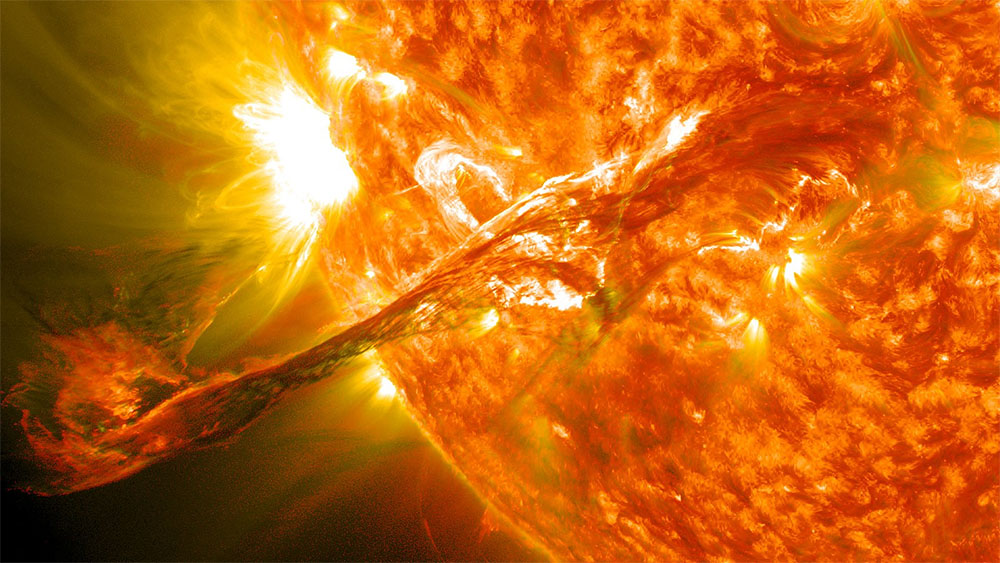
One of the bigger and most counterintuitive mysteries of the Solar System for which we haven’t been able to find answers is why is the outer layer of the Sun’s atmosphere hotter than the surface of the star.
The Sun is composed of multiple layers. The visible surface or the part we can see is called the photosphere and burns at a temperature of about 5,700 K. On top of that, the Sun also has an atmosphere and the outermost part of it is called the corona. One would think that being separated from the surface, the heat would start to dissipate and the temperature of the corona would be lower than in the surface. Well, that’s not the case. In fact, it is the extreme opposite as the temperatures in the corona can reach 1,000,000 K.
Some theories have been formed as to why this happens that have to do with the ionization of Helium in the atmosphere but we don’t know for sure.
4. How did Saturn get its rings?

Saturn’s rings are probably the most iconic and recognizable feature of any planet in the Solar System. We know the rings are millions of little pieces of rock, ice, and dust. What we don’t know is how they came to be.
There are multiple theories about the origin of the rings. The coolest one is the rings are the remnants of a moon that might have been destroyed by an asteroid, or crushed bt Saturn’s own gravity. The other possibility is they are simply leftover pieces from the original cloud of materials from which Saturn was formed.
Since we are on the subject of Saturn’s rings. We also don’t know how old they are. They might have formed recently or they might have been there from the beginning. It seems like solving one of these two puzzles would really help us solve the other. Recent data from the Cassini probe suggests the rings might be very young and might have even formed around the time dinosaurs were walking on Earth (which is like yesterday in astronomical time), but this has yet to be confirmed.
5. Why is Uranus tilted sideways?
Something very curious happens with Uranus rotation. It seems like the planet is on its side if you compare it to the other planets in the Solar System. While the rotational axis of the other planets is mostly perpendicular to the direction of the Sun, Uranus’ axis is tilted and almost pointing to the star, making the planet look like it is rotating on its side.
It is possible at some point in its history a huge object impacted Uranus, and changed the direction of its axis. Some theories suggest that very same impact created most or all of its 27 moons.
Check out the video above on question #1 if you want a visualization of this phenomena.
6. Does the Oort Cloud exist?
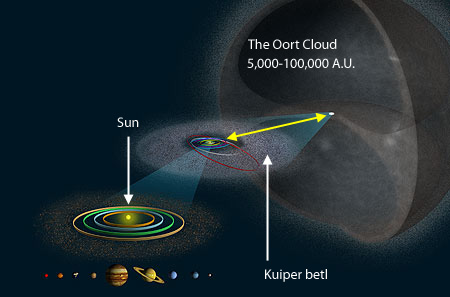
Have you ever wondered where do comets come from? To solve that question, astronomers have theorized that a group of millions and maybe billions of small, icy, rocky objects exists on the outer limits of the Solar System. These objects form a huge “cloud” named the Oort Cloud after one of the astronomers who proposed it. Sometimes these objects will change be shot out of the Oort Cloud due to collisions or gravitational forces and become wandering comets.
The objects in the Oort Cloud are too small and far away to reflect any light from the Sun so its existence is still not confirmed. If you want to learn more about it, check out our comets explained for everyone article.
7. That weird vortex on Venus’ south pole

There’s a very mysterious swirling vortex in the south pole of Venus that astronomers would love to know more about but haven’t been able to yet. It behaves a like a huge storm, but there’s no rain so it is likely made of other gases. One of the most puzzling things about it is how fast it rotates. It spins up to 60 times faster than the planet itself which is weird to us as storms on Earth are never faster than Earth’s rotational speed.
8. How was the Moon created?

One of the thing that says a lot about how little we still know about our universe is the fact we don’t even know for sure how our own Moon was formed.
The current theory most astronomers agree on is that at some point early in the Solar System’s life, a planet around the size of Mars crashed against Earth. This collision left a lot of debris and pieces of both planets hanging around but still trapped by Earth’s gravity and were left orbiting it. After millions of years, all these pieces came together thanks to gravity and formed the Moon.
While the theory is widely accepted, it leaves some questions up in the air, like why wasn’t Earth taken out of its orbit by this impact? and what happened to the other hypothetical planet?.
9. Planet Nine
Conspiracy theories have always liked imagining mysterious, unknown planets in the Solar System. They have called it different names Nibiru, Planet X, etc. Those theories tend to be way too out there to be real and lack the scientific foundations. But could there really be a planet we don’t know about out there? The answer surprisingly is: maybe.
It was only on 2005 when three big objects were discovered that were thought to be the mythical ninth (or tenth) planet beyond the orbit of Neptune. Those objects were later classified as the first dwarf planets and were named Eris, Haumea, and Makemake. But that got us thinking, what else is out there that our telescopes are still not powerful enough to detect?
If a planet was to exist in the outskirts of the Solar System, a popular theory is it could be located beyond the Kuiper Belt. It would be far enough from the Sun’s light to explain why we haven’t detected it yet and it would explain why the Kuiper Belt ends so suddenly as a planet could have cleared the area from other objects.
A planet closer to us would be very unlikely, though. We have looked and looked in there and by this point, we would have detected at least some kind of gravitational pull that astronomers couldn’t explain. If there’s a ninth planet, it is in those areas beyond Neptune that still remain a mystery to us.
10. Did Mars have oceans in the past?
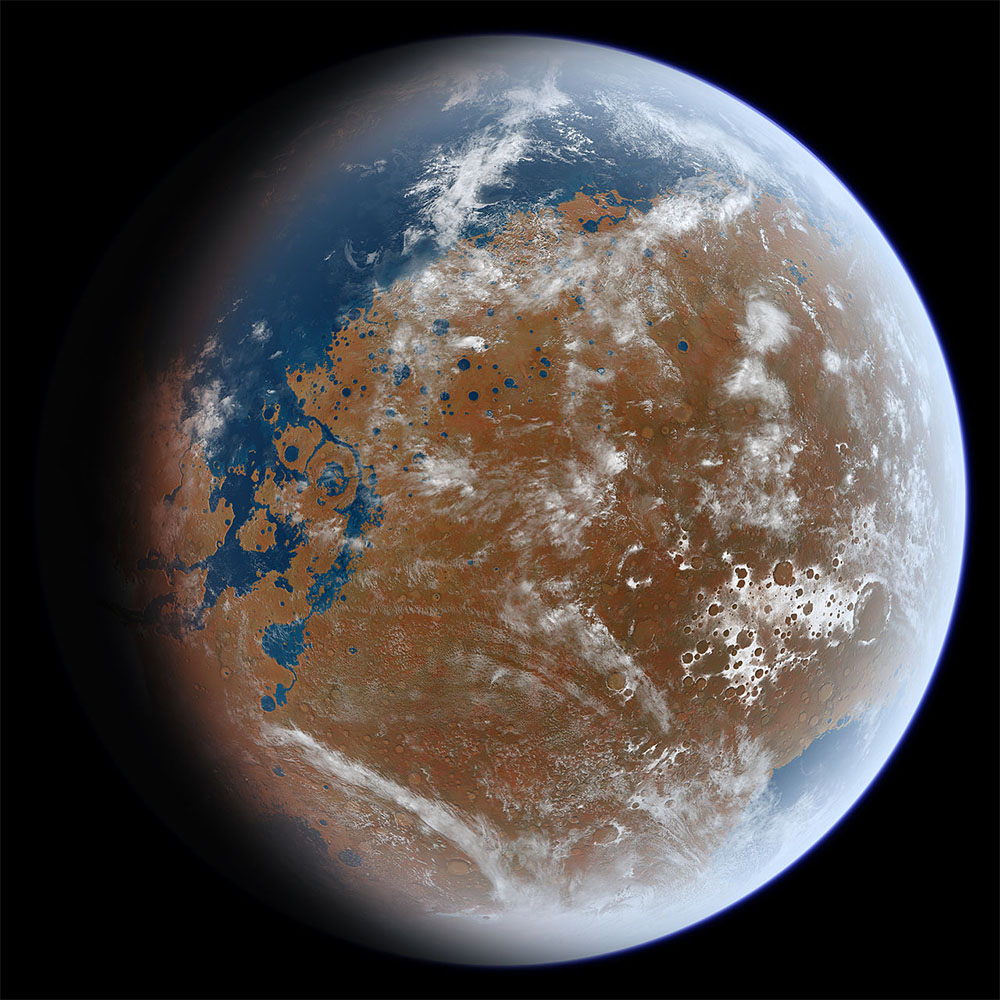
This one we are close to figuring out.
For years astronomers have found evidence of erosion, channels, and canyons on Mars. As far as we know, all of those are caused by liquid water slowly forming them. From that data, we can hypothesize that at some point in the past Mars has liquid water running on the planet. Some astronomers think even one-third of the Martian surface could have been covered in water. Some scientists believe even today it would be possible for water to exist under Mars’ surface where it is safe from many of the effects that would have caused the surface water to disappear.
The more we explore and study Mars, the more this theory seems correct, but that opens other questions. What happened to Mars that made all that water evaporate or freeze? Could there have been life on the red planet at some point?
11. How long really is a day on Saturn?
With all the time we have spent looking at our Solar System and the fact NASA has sent the Cassini all the way to Saturn to explore the planet, you would think it wouldn’t be too hard to figure out how long does it take for Saturn to rotate. The answer, however, is a bit tricky because we know the rotational period of Saturn…but not really.
Here’s the thing, Saturn is a gas giant. This means the visible part we can see from outside the planet is mostly, well…gas. From our observations, we have seen it takes that gas somewhere between 10 hours and 10 minutes to 10 hours and 38 minutes to do one rotation depending on the area of Saturn you are looking at so we have taken that number as the rotational period for the planet. The problem is we don’t know if the inner core of the planet rotates at that very same rate because of all those layers of swirling gas around it.
12. Was Mars hit by a giant cosmic lightning bolt?
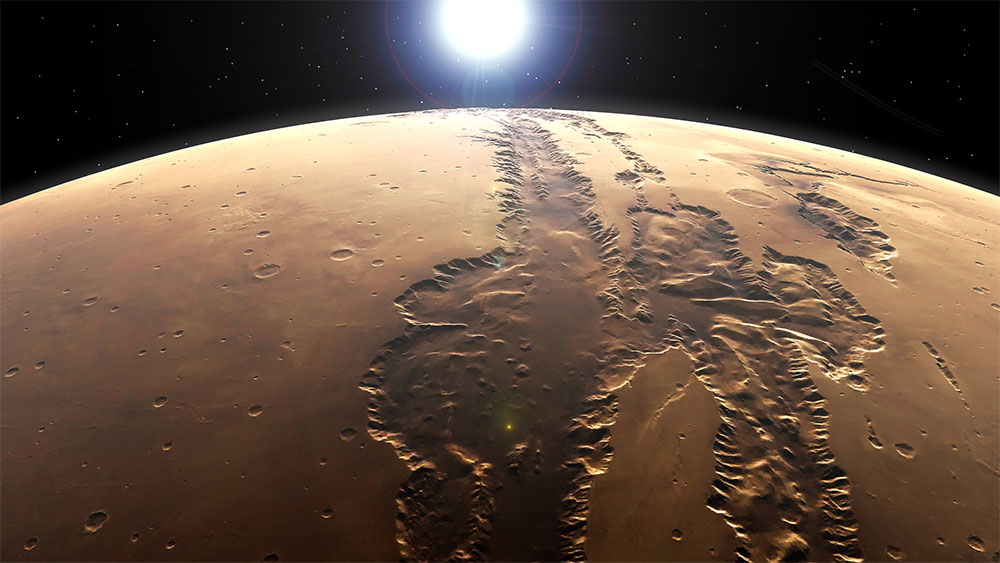
There’s a huge, strange canyon on Mars called Valles Marineris. Just to give you an idea of how big it is, it is about 4 times deeper and 5 times longer than the Grand Canyon in Arizona. But its weirdness only starts there. Some scientists believe this canyon wasn’t formed in a traditional way (water slowly eroding the land over the course of millions of years) but in a much cooler manner. They believe Valles Marineris is a scar.
For years scientists have theorized the existence of cosmic lightning bolts. Imagine a lightning bolt, but on a cosmic scale, traveling across the cosmos with unimaginable amounts of energy. Then imagine this bolt hits a planet, let’s say, Mars. The impact would be big enough to leave a mark forever on the planet and create a valley the size of Valles Marineris.
One more evidence that could support the lighting bolt theory is that Mars also has a hole in its atmosphere that is leaking hydrogen into space. Could this hole have been created by that very same impact? Is that the reason why Mars lost its ocean?
13. Why are the planets so different in composition?
Most astronomers agree on the origin of the Solar System. They believed a disk of rocks and pebbles formed around the Sun and they started fusing impacting one another and fusing together to form the planets. But this creates a problem. If all the planets formed from the same disk and grew together at the same time, how come they ended up being so different from one another?
Some of the differences between planets can be attributed to variables like how close they are from the Sun. This explains for example why some planets could hold liquid water like Earth and (maybe) Mars while others can’t because they are too cold, but it doesn’t explain other things like the vast differences in size and composition.
Some theories suggest solar winds “blew away” the lighter materials, allowing for the outer planets to have a different composition. Another study found a correlation between the calcium isotope and the size of the planets, suggesting planets grew at the same rate, but then stopped growing at different times.
14. Do Jupiter and Saturn even have a core?
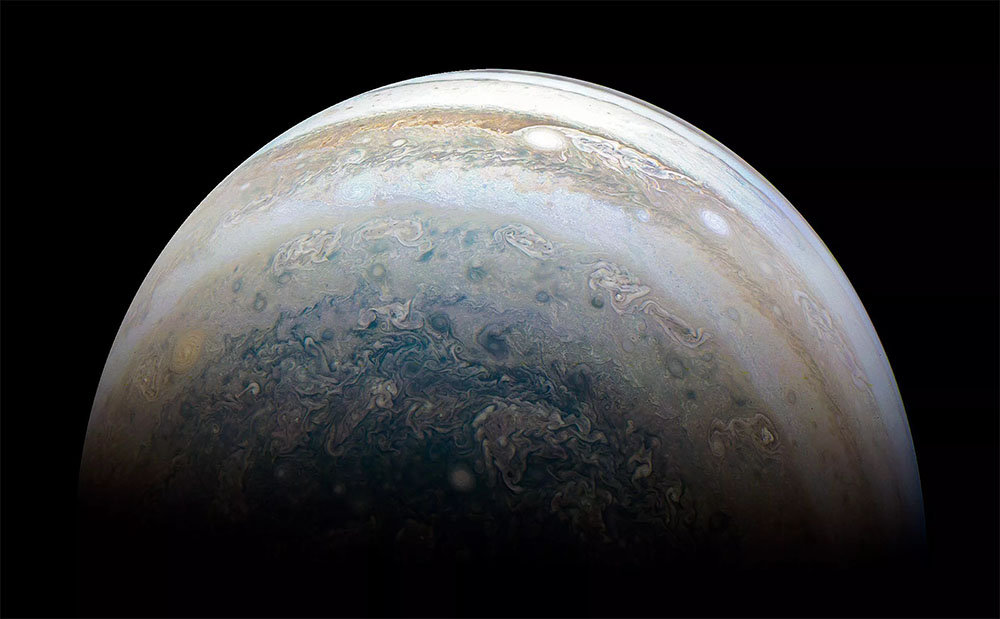
When we have lived only on one planet, it is hard to imagine how a different one might be so different and weird and in the case of Jupiter, Saturn, and others, so not-solid. While these two giants of our Solar System look just like a planet, they are mostly just gas as far as we can tell. If you were to take a guess without knowing, it would be easy to think behind all those storms, clouds and gas we see on top of those planets there would be a surface we might be able to land on some day and explore. Well, there isn’t. If you were to drop something on Jupiter, it wouldn’t hit a surface. It would just drop down into the center of the planet until it was crushed by the pressure.
Scientists believe both planets might have a core with a thin, rocky or icy layer in the middle because it fits with our current model for how planets are formed. The problem is, we have never actually seen or confirmed such core exists and data found by the Juno spacecraft on Jupiter left us with more questions than answers as it suggests Jupiter’s core might be dissolved.
15. Why does the Kuiper belt end so suddenly?
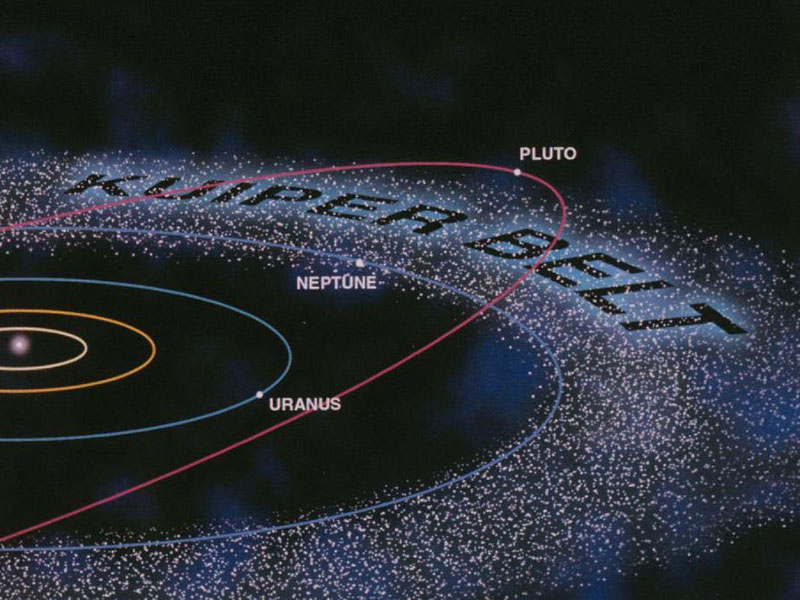
The Kuiper Belt is a group of asteroids orbiting the Sun beyond Neptune’s orbit. Think of the asteroid belt, but bigger. Some comets and meteors in the Solar System come from there, however, there’s something very curious about the Kuiper belt.
At some point about 50 astronomical units from the Sun, the Kuiper belt suddenly ends. This area is referred to as the Kuiper cliff and it is a mystery as it goes against our model of how the Solar System was formed. With our current theories, we would expect to see not only more objects beyond that, but they would be even bigger.
One theory that tries to explain this question suggests a planet would have cleared the area with its gravity and absorbed those objects. This is one of the most popular theories about the potential ninth planet mentioned earlier, but no evidence of such planet has ever been found.
The other theory is there are objects beyond the Kuiper cliff, but they are too small to reflect any light or to have any gravitational effect on its surroundings so we simply can’t detect them.
16. Why does Pluto have mountains?
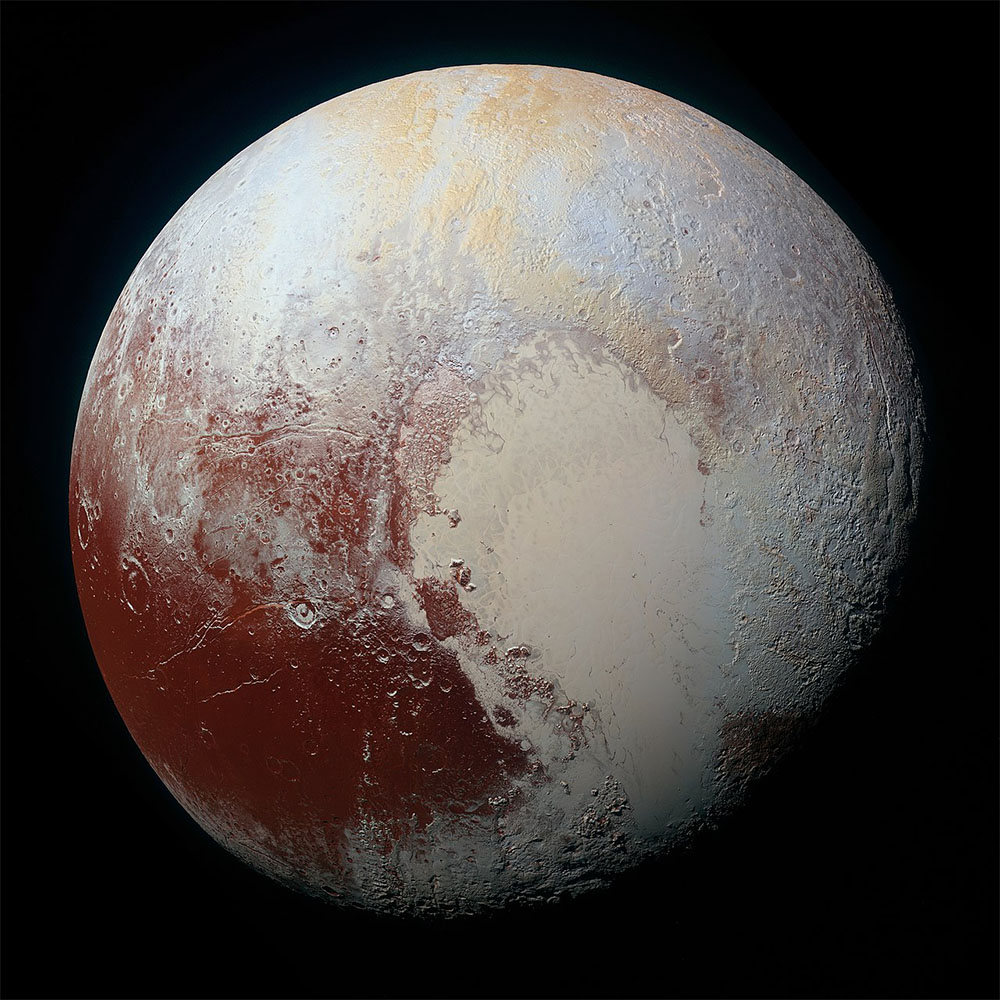
The dwarf planet Pluto has some of the most unique features of any other object in the Solar System. It has huge mountains made almost entirely out of ice. The question that puzzles scientists is where did they come from?
For a mountain to be created there needs to be geological activity. That means tectonic plates moving because of volcanic activity or some other form of heat release. And that’s where the big mystery lies, where are the heat and energy coming from?. As far as we can tell, Pluto is too far away from the Sun to receive much energy from it and its core is just ice and rock so there’s no lava flowing.
One theory suggests Pluto might have some sort of system of cryovolcanoes, which are basically volcanoes that spit water or gases, but the reality still remains a question to be answered.
17. Is there life in other places of the Solar System?
This is the big one, for sure. Finding life outside of Earth would be the biggest scientific discovery in the history of mankind. We have always wondered if it would be possible for other planets besides ours to sustain life or if they had it at some point in the past.
There are some places in our very own Solar System that might be a good place to start our search.
First, there is Mars. Our neighbor would make sense as we are pretty sure it had a water ocean in the past and temperature conditions wouldn’t have been too different to ours, at least back then. The multiple exploration rovers that we have managed to send to Mars have found some promising data like some complex chemical compounds the Curiosity rover found in 2018, but nothing has been conclusively proven.
The next best places to look for signs of life are moons. Specifically, Europa, one of Jupiter’s moons and Titan on Saturn. Europa from the outside loos to be made mostly made out of ice, but astronomers believe below the ice crust there are oceans of salt water that could have the right conditions for the development of life.
Titan is a curious satellite as it is the only moon in the Solar System that has its own atmosphere. It’s mostly made out of hydrogen but the atmospheric pressure isn’t that different from Earth’s. Titan is also believed to have ocean although they are made of methane.
It will be a while before we send probes to either Europa or Titan, but hopefully, at some point we will be able to explore them closely and check for signs of life.
18. How big is the Solar System really?
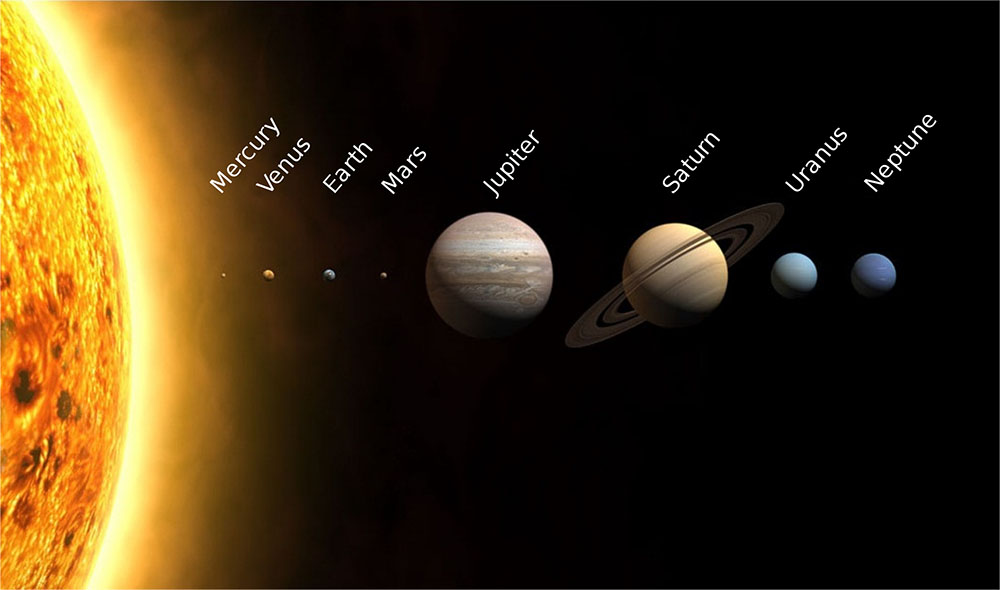
As we mentioned above when we talked about the Oort Cloud, we still don’t know much about the outer edges of the Solar System. So much we don’t even know where it ends.
Some astronomers mark the end of the Solar System at the Heliopause, the imaginary line where the solar winds stop. That would make the Solar System about 79 astronomical units wide in diameter, but the Oort cloud would be located way beyond that. If we take the Oort Cloud as the line for the Solar System’s end, it is estimated it could be up to 200,000 astronomical units away or a little more than 3 light years.
Conclusion
As you can tell from our list, There are still many questions about our Solar System that need to be answered. We only picked the most interesting ones for this list but there are many more that didn’t make the cut like the crater shaped like a spide in Mercury or why is Titan the only moon with an atmosphere.
With all the advances in equipment and new techniques we will hopefully get some answers to a lot of these questions in the coming decades so stay tuned and keep learning. Maybe you will be the one who figures them out.

